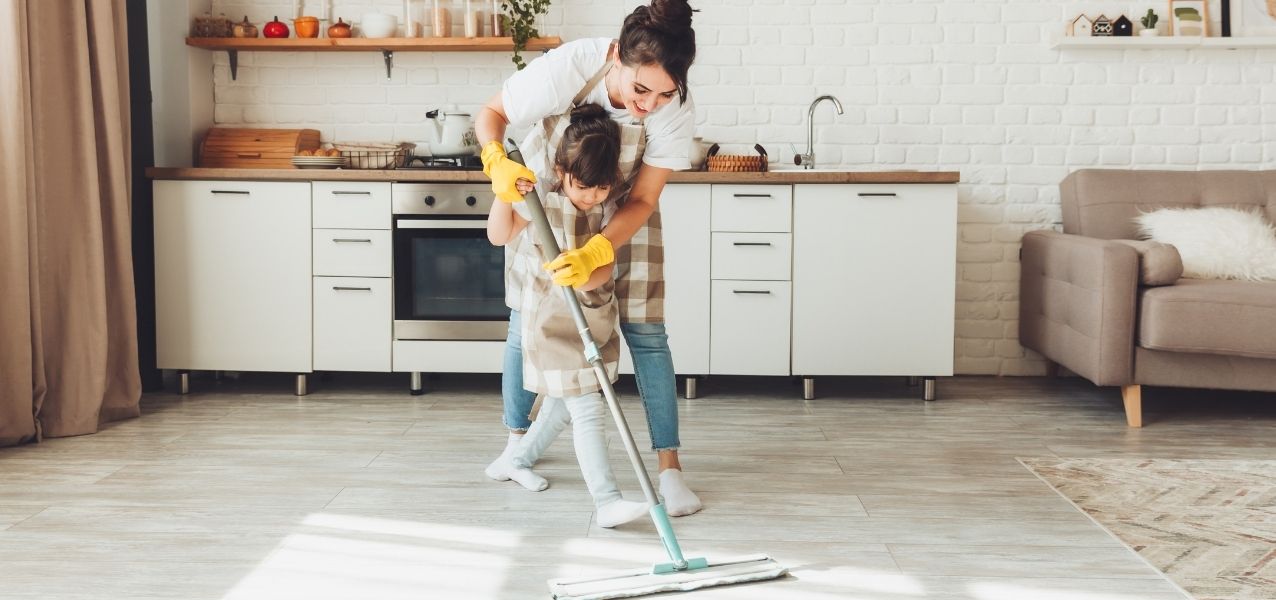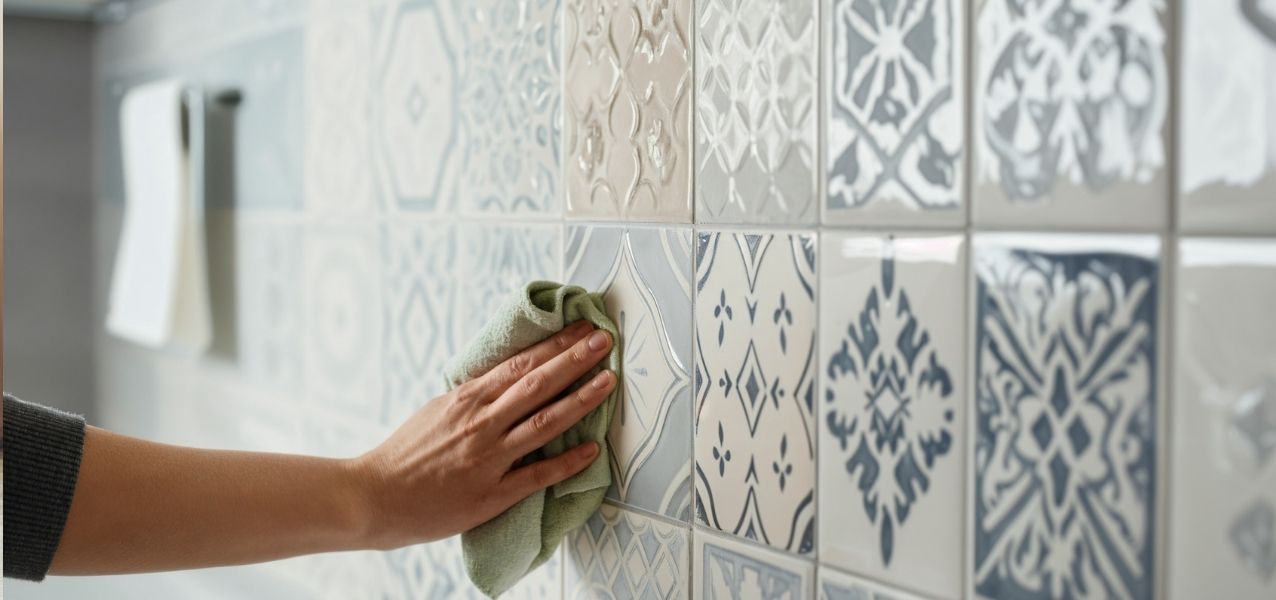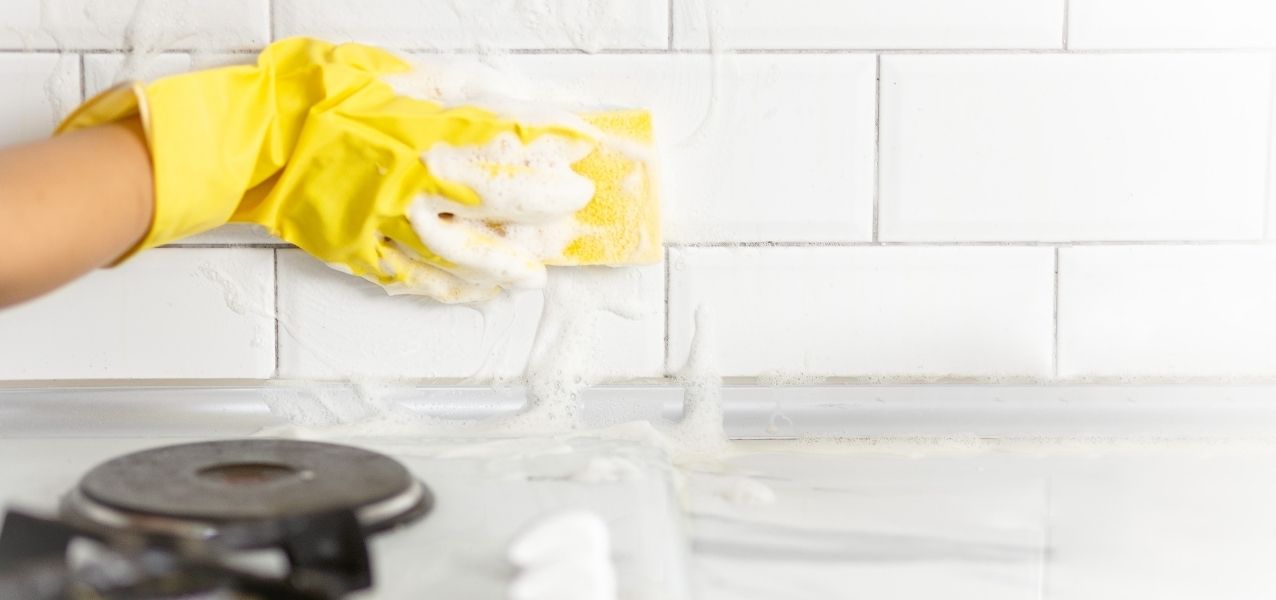How to Clean Kitchen Tiles? Effective Methods for Cleaning Kitchen Tiles
2025-04-02
Author: Lucy Forbes – PR & Communications
When it comes to the kitchen, tiles offer both functionality and beauty. They protect our paint from grease, dirt and everyday messes and make cleaning up a lot easier. Tiles still require regular maintenance to ensure they are hygienic and looking pristine. This guide teaches you all the tricks on how to clean your tiles and keep your kitchen looking brand new.
Best Practices for Cleaning Kitchen Floor Tiles
Regularly sweeping or hoovering your kitchen tiles keeps your floors looking clean, tidy and fresh, stopping dirt from accumulating. This doesn’t only make your room look tidier but makes your flooring more comfortable underfoot and reduces the risk of scratching. By regularly sweeping or hoovering, having to do a deep clean of your floors will happen less frequently, saving you time and effort in the long run.
How to Clean Kitchen Floor Tiles

1. Begin by hoovering or sweeping your floors, to remove loose dirt and dust.
2. For ceramic tiles and porcelain tiles, you can use a mild cleaner, or lemon oil with water, or a water and washing up liquid mix on your tiles. For natural stone, make sure you are using a pH-neutral cleaner. We recommend Nicobond Floor and Wall Tile Cleaner, as it tackles all dirt, grime and grease, and is safe to use on ceramic, porcelain and natural stone.
3. Mix your solution of choice into a mop bucket, and wet through your mop. Make sure you ring out the mop thoroughly before putting onto tiles as excess water can cause damage and be slippery. Repeatedly rinse the mop throughout cleaning to prevent spreading dirt around the kitchen.
4. Ensure the room is fully dry before letting people and pets back in to prevent streaks and hazards.
How to Clean Kitchen Wall Tiles
1. Loosely wipe of any loose dirt from the tiles with a dry cloth.
2. Dampen a cloth, and use warm, soapy water to wipe down the kitchen wall tiles. For more stubborn marks, use a cleaning solution that is safe to use on your tiles. We recommend using Nicobond Floor and Wall Tile Cleaner as it is premade, safe and easy to use.
3. Pay attention to your grout lines, where dirt tends to build up.
4. Rinse your cloth thoroughly, and clean over your tiles with clean water to remove any soap or cleaning solution.
5. Dry with a dry cloth to prevent any streaks or water marks.

How to Tackle Greasy Kitchen Tiles

For those stubborn greasy spots on your floors or walls, make a paste using baking soda and water.
Place the paste on any spots or marks and leave for 10-15 minutes.
Use a clean cloth to wipe away and ensure all residue is removed, before buffing dry.
Alternatively, Nicobond Floor and Wall Tile Cleaner Extra will remove all grease from your tiles.
Conclusion
By following these methods and doing regular small cleans of your tiles, you’ll keep your kitchen looking sparkling and brand new for years. Want to know how to clean your bathroom tiles too? Read the how to clean bathroom tiles article.
FAQ
1. How often should I clean my kitchen tiles?
We recommend doing little cleans daily, by wiping them down after use. Deep cleaning them weekly will prevent buildup of dirt, grime and grease.
2. Can I use bleach to clean my floors?
Bleach is effective; however, it isn’t advised to be used, especially on natural stone as it is harsh and can strip material. Opt for natural solutions or tile cleaners.
3. How can I remove stubborn stains from my kitchen tiles?
For those stubborn spots, try baking soda paste, or we think one of the best tile cleaners is Nicobond Floor and Wall Tile Cleaner.
4. What cleaner is best for natural stone tiles?
Always use a cleaning solution that clearly states it is safe to use on natural stone floors. Again, Nicobond Floor and Wall Tile Cleaner is recommended.
5. How do I keep my grout lines clean?
Regularly clean your grout lines, using baking soda paste or a cleaner to ensure dirt isn’t building up and staining.
Tags: Wall and floor tiles
Leave a Comment






